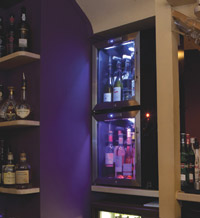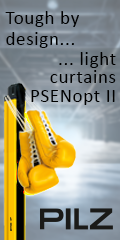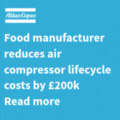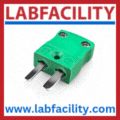
Posted to News on 23rd Apr 2012, 00:00
What's best for preserving wine: pressure or vacuum?
Serious wine buffs have often asked themselves the question, 'what's better for preserving wine - pressure or a vacuum?' However, Dick Berresford, managing director of Ipswich-based Bermar, believes that, given the right technology, you can combine the best of both worlds.

>Perhaps better known for its brand name, Le Verre de Vin, the market for Bermar's UK manufactured wine cabinets is found in hotels, restaurants and bars where wine is served by the glass in 82 countries around the world. Every three star Michelin restaurant in the UK uses Bermar equipment, as do over 800 Whitbread pubs.
>After opening, the wine remaining in a bottle initially has a rapid oxygen consumption rate, which means that most chemical changes occur to the contents within the first couple of days. The process slows progressively thereafter, but by then the damage is done; damage that is irreversible and is simple to spot by smelling or tasting the wine.
>The first chemical compound formed when oxygen reacts with the ethanol in a wine is acetaldehyde. At low levels it can make a wine taste 'flat' and vapid and it is also responsible for the loss of a wine's fresh fruity taste. Further exposure to oxygen converts the acetaldehyde into Acetic Acid, the most common of all volatile acids and one of the common, sour tasting carbonic acids which form the main constituent of vinegar. The final chemical change takes place long after a wine should have been discarded (usually within five to ten days). The reaction between oxygen and the phenolics in the wine causes the wine to change colour, moving to amber and finally to a brackish brown.
>To help preserve the wine, Bermer's managing director Dick Berresford turned to pressure and vacuum technology from PVL. "We buy switches from PVL for two purposes: one is to create a sub-atmospheric pressure or vacuum in bottled still wine, and the other is to create a super-atmospheric pressure or compression of carbon dioxide inside Champagne or sparkling wine bottles," he explains. "We incorporate PVL switches into a range of nine different preservation systems. The equipment is used for all wines including those at the lower end of the market. If a restaurateur offers guests a choice of 20 different wines by the glass, he doesn't want to compromise their quality. As long as he re-seals each bottle after every glass sold, it will give him a 21-day shelf life. Even if he is selling wines in the £3 to £8 a glass range, he can still get a significant profit boost in the same way that the Michelin three star restaurant selling wine at £50 to £100 a glass would."
>But wouldn't it be better to compress an inert gas like carbon dioxide into a still wine bottle instead of evacuating it? Berresford argues that, because of the pinpoint control provided by PVL's switches, the benefits of this are replicated irrespective of the amount of wine remaining in a bottle. In order to provide more than adequate preservation in over 95% of cases, only a vacuum is needed. He adds: "There is the possibility of using inert gasses in combination with vacuum, and we have patented systems under a different brand, which also include PVL switches. It is only sold selectively at the moment but will form the next generation of equipment."
>Vacuum based wine preservation is an exact science. To guarantee performance, the system must be able to create a precise, repeatable level of vacuum, and this is where PVL's switches play a role. The equipment mustn't over-evacuate the bottle as this will damage the delicate phenols and esters that make up much of the body and bouquet of the wine.
>The system must also not 'under-evacuate' the bottle either, as too much oxygen means the wine continues to oxidise. Until a quantifiable, minimum vacuum is achieved, the technique achieves no preservation whatever - which is the reason that some hand pumps are described as producing 'hit and miss' results. To allow use by inexperienced operators, the system must have a cut-off switch that is quickly and automatically triggered to ensure precision control, and to eliminate the risk of accidental over or under vacuuming.
>This is where PVL's switches excel: the system must incorporate a pneumatic 'balancing' technique that ensures the precise level of vacuum is created within the open bottle, each and every time the system is used and irrespective of the amount of wine remaining inside. Performance criteria here are ±1% accuracy. The system must also use proven, specialist 'vacuum' stoppers that create an effective, semi-permanent seal to prevent air seeping into the bottle.
>Champagnes and sparkling wines
>The boffins in white coats in Reims, the home of Champagne, recently confirmed that "there are 30 times more flavour-enhancing chemicals in the bubbles than in the rest of the wine". This goes some way to explaining why the traditional Champagne method of production tastes so much better, and the debate has inevitably swung to the best ways to protect open bottles of Champagne and sparkling wines.
>The finer and more plentiful the bubbles, the more of the taste and flavour of the Champagne will be conveyed to the drinker. During the secondary fermentation process, yeast converts the sugar to alcohol (the 'kick') and carbon dioxide (CO2) to bubbles (the 'pop'). The CO2 is gradually dissolved and trapped inside the Champagne bottle. Once the lees (discarded yeast waste and other residue) are removed from the bottle it is then essential that the bottle remains completely airtight or the famous 'sparkle' will be lost.
>As with all wines, one of the biggest threats to an opened bottle of Champagne comes from the air - or more particularly from the oxygen (O2) contained within. Champagne however is also at immediate risk from the loss of the pressure retaining device (the cork), that has kept the sparkle in since it was produced. The carbon dioxide pressure in an unopened Champagne bottle can reach more than 140 pounds per square inch - about twice the pressure used to inflate a double-decker bus tyre. This is the reason that Champagne bottles are so strong and heavy. Once the flow of carbon dioxide has slowed, the process of oxidation takes over as the major threat to the Champagne.
>Champagne stoppers can be effective for short term preservation provided there is a sufficient quantity left in the bottle and it has not been allowed to lose its natural CO2 by being left open for too long before resealing. As a general rule, anywhere from two thirds of a bottle down and this technique becomes less and less reliable.
>"Manufacturers of hand operated and battery pumps claim that the introduction of air under pressure will prevent oxidation and bubble loss in opened bottles of Champagne, which is bizarre" claims Berresford. "The logic seems to run that air, or rather all its constituent gases, can be used to 'lock' carbon dioxide in a solution. As the pressure of air in the bottle is increased, the solubility of each gas within the air increases - the result is that oxygen within the air will be even more quickly absorbed into the Champagne, actually accelerating the oxidation of the drink."
>CO2 is the only gas that can be used in the Le Verre de Vin's super-atmospheric re-sealing process, since, quite logically; it is the only gas with the same molecular structure as the CO2 in the Champagne itself. Applying 'exactly' the right pressure of CO2 using a PVL switch means that the natural fizz in the Champagne is locked in place - and Le Verre de Vin achieves the optimum reseal pressure on each and every bottle with over 99% accuracy.
>The science behind this has resulted in Le Verre de Vin being awarded worldwide patents and achieving international recognition as 'The Industry Standard for preservation'






